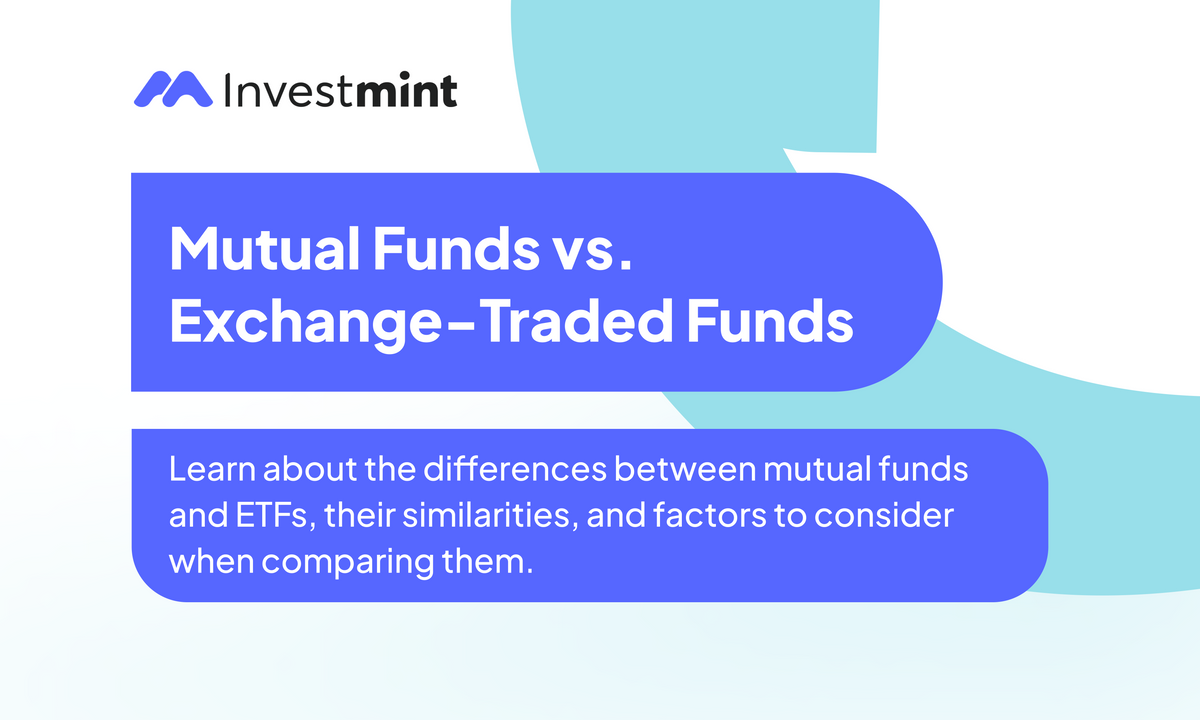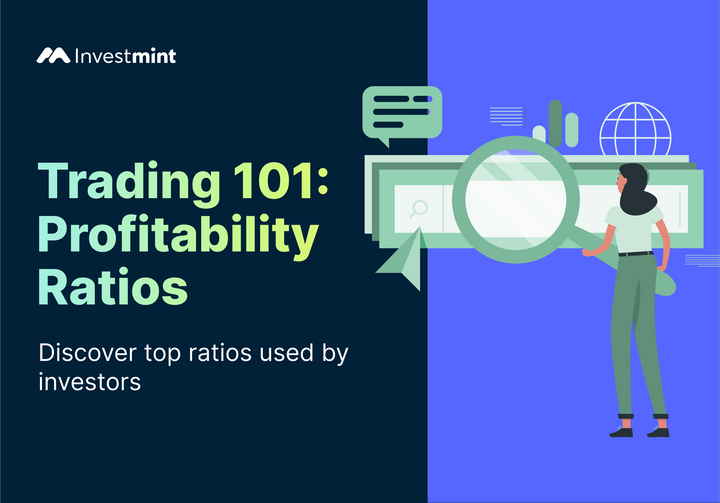Mutual Funds vs. Exchange-Traded Funds: Which One Is Better?
Learn about the differences between mutual funds and ETFs, and factors to consider when comparing them

Investing can be tricky, especially if you’re a beginner, and similar products make it even tough to decide.
You may have heard a lot of advice about investing in mutual funds.
What Is a Mutual Fund?
A mutual fund is a type of investment vehicle that pools money from multiple investors to buy a portfolio of different securities, such as stocks, bonds, or other assets.
What Is an ETF?
Like mutual funds, ETFs (Exchange Traded Funds) pool money from multiple investors and invest in a diversified portfolio of different securities.
However, unlike mutual funds, ETFs are traded on stock exchanges throughout the trading day, and their prices fluctuate based on supply and demand, similar to individual stocks.
But there are some inherent differences between mutual funds and ETFs.
In this blog post, we’ll explore what sets them apart and which form of investment may be a better choice for you.
They are similar
Mutual funds and ETFs are both pooled investment vehicles. As an investor, you can choose to invest in either of these instruments and enjoy returns.
Active Funds
Mutual funds are most often professionally managed by a Fund Manager and have an investment objective to generate returns. These are called active mutual funds. Fund managers make investment decisions with specific strategies and techniques to maximize the funds invested.
Passive Funds
There are also passive mutual funds that track the performance of an index like the Nifty50. Passive mutual funds invest in the same proportion as the index they are tracking. The objective is to mimic the returns of the index. Since they do not require as much expertise, passive mutual funds have a lower expense ratio and management fee compared to active mutual funds.
ETFs & Passive funds
Exchange Traded Funds (ETFs) are similar to passive index funds. They track an index and try to mimic the performance of the index.
So, how do they differ from passive mutual funds?
They trade on an exchange like a stock. You can buy and sell units of ETFs throughout the trading day. In contrast, you can buy or sell mutual fund units only at the end of a trading day, and you don't need a DEMAT account or access to the exchange through a broker.
Explain Mutual Funds and ETFs With An Example
Imagine that you are craving some cake. But, you don’t feel like baking one on your own. You could either go to a bakery and buy yourself a slice of cake or you could have your mum follow a recipe at home and bake the cake for you instead.
A mutual fund investment is like getting a slice of cake. A professional bakes the cake and sells you a slice. Different people can choose to buy the slice at a certain price and enjoy it.
In the case of a passive fund, a fund that tracks an Index like NIFTY50, the recipe of the cake is the same for both Mutual funds and ETFs.
The difference is in the way it's delivered, ETFs are like those large scale factory backed cakes, low in cost, and consistent in taste. Also you can buy them anytime during the day. Whereas MFs are like traditional bakers, they open their shops only once a day.
How Do I compare Mutual Funds With ETFs?
The factors below are key and help us compare one product with the other.
- Expense Ratio: Mutual funds generally have higher expense ratios compared to ETFs. Mutual funds are actively managed by a professional fund manager, which adds to the operating costs. In contrast, ETFs are typically passively managed, meaning they track a specific index and don't require a lot of active management. This makes them more cost-effective.
- Flexibility and Liquidity: ETFs offer more flexibility than mutual funds because they can be bought and sold throughout the trading day, just like individual stocks. Mutual funds can only be bought or sold at the end of the trading day at the net asset value (NAV). ETFs are also generally more liquid than mutual funds, as they can be traded on exchanges with high trading volumes.
- Tax Efficiency: ETFs are generally more tax-efficient than mutual funds. This is because ETFs have a unique structure that allows them to minimize capital gains distributions.
- Transparency: ETFs are generally more transparent than mutual funds. ETFs disclose their holdings daily, while mutual funds typically disclose their holdings quarterly or semi-annually.
What Is Liquidity And How Does it Work in Mutual Funds vs. ETFs?
Liquidity refers to how easily you can buy or sell an asset. If you can sell something easily, it is considered a liquid investment. Also, you need buyers and sellers available at any time for an asset to be liquid.
Take the example of physical gold vs. real estate, which one is easy to buy or sell? Gold, because it's easy to move, there are buyers always, real estate not so much.
Likewise, Mutual funds are highly liquid - selling your mutual fund units is extremely easy. You can just sell through your Asset Management Company.
While most passive ETFs are liquid in theory, since they trade on an exchange, there may sometimes be a problem finding a seller at the price that you want. However, popular ETFs such as Nifty50 index ETFs or Sensex ETFs are highly liquid and you can find sellers in no time.
What Has Been the Adoption of ETFs Like?
While mutual funds have been around for quite some time and are popular investments, people are now seeing the potential of ETFs as investment opportunities.
Suggested read:
Why Fund Managers Struggle to Outperform the Index
In the US, assets under management (AUM) of ETFs has grown from $301 billion in 2005 to $7.19 trillion, marking a CAGR of 62.61% over the last 16 years, according to Statista.
In 2021, ETFs in the US saw a net inflow of $834 billion, which is more than double the net inflow of $410 billion in 2020, according to the Investment Company Institute.
The trend has been similar in India. The assets under management (AUM) of ETFs in the country has grown from Rs. 964 crore in March 2014 to about Rs. 2.9 lakh crore as of December 2021, a CAGR of 45.8% over the last 7 years.
Returns of ETFs are also attractive. The Nifty 50 ETF has delivered an annualized return of around 11% over the past five years, while the BSE Sensex ETF has delivered an annualized return of around 10% over the same period.
What Should I invest in - ETFs or Mutual Funds?
If you want to invest in an index, like the Nifty50 or the Sensex, investing in an ETF makes the most sense.
They have lower expense ratios, are liquid and more tax-efficient. Passive mutual funds will eat up more of your margins and leave you with a lower return.
In case you want more professional management with a specific investment objective, then active mutual funds may be a better option.
In short, keep it simple and go passive with index ETFs.
Investmint app brings you the latest stock market updates. Ensure you capture today's opportunities by tapping below.



